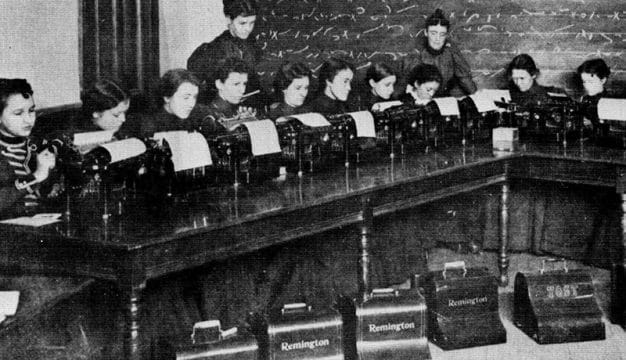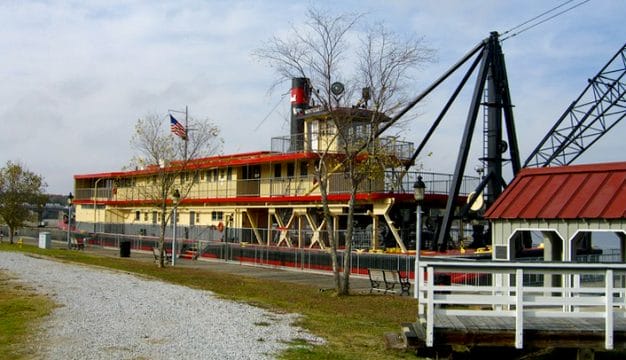Walter B. Jones
 Walter B. Jones
Walter Bryan Jones (1895-1977) was a noted Alabama geologist and archaeologist who served for 34 years as Alabama State Geologist and director of the Alabama Museum of Natural History. Although the Moundville site in Hale County had been explored in the 1800s and more thoroughly in the early 1900s, Jones was the first to perform a large-scale, ongoing scientific excavation of Moundville, and he founded the Jones Museum at Moundville Archaeological Park. He was also an avid proponent of the careful management of the state’s natural resources.
Walter B. Jones
Walter Bryan Jones (1895-1977) was a noted Alabama geologist and archaeologist who served for 34 years as Alabama State Geologist and director of the Alabama Museum of Natural History. Although the Moundville site in Hale County had been explored in the 1800s and more thoroughly in the early 1900s, Jones was the first to perform a large-scale, ongoing scientific excavation of Moundville, and he founded the Jones Museum at Moundville Archaeological Park. He was also an avid proponent of the careful management of the state’s natural resources.
Born on February 25, 1895, in Huntsville, Madison County, Jones was one of six children of land surveyor and civil engineer George Walter Jones and Elva Lena Moore Jones. He received a bachelor of science in geology from the University of Alabama (UA) in Tuscaloosa, Tuscaloosa County, in 1918 and a master’s degree in 1920. In the interim, he served in Company C of the 548th Battalion of the Corps of Engineers in the U.S. Army during World War I. He spent a year in France in an engineering capacity and achieved the rank of first lieutenant. Jones would later be promoted to colonel during World War II, while also serving as an engineer, in New Guinea in the Pacific Theater.
Jones next pursued a Ph.D. at Johns Hopkins University in Baltimore, Maryland, graduating in 1924. Also that year, Jones married Hazel Lucile Phelps, with whom he had three sons. While working on his doctoral degree, he was employed as a geologist by the Mexican Petroleum Company, headquartered in Tampico, Mexico. He soon accepted a position as Assistant State Geologist for the State of Alabama, working under State Geologist Eugene Allen Smith, also a professor at the University of Alabama. Under Smith’s direction, Jones began studying Native American culture during the Mississippian period, specifically the peoples who flourished in the vicinity of the Black Warrior River and present-day Moundville between approximately 1000 and 1450 A.D. When Smith died in 1927, Jones took over as Alabama State Geologist and as director of the Alabama Museum of Natural History.
When Jones first encountered the site, it had been and continued to be damaged by agriculture, erosion, and looters. He was desperate to save and preserve the site and began major excavations in the early 1930s, but funding was scarce during the Great Depression, so for a time Jones relied on workers from the Civilian Conservation Corps (CCC). Tireless in his pursuit of funds from politicians and the wealthy to back his plans for Moundville, Jones was so driven that he provided much of the financing to purchase the land himself, even going so far as to repeatedly mortgage his home and borrow against his life insurance. (He was later partially reimbursed by the UA Board of Regents.) He was also the impetus behind the push to bring Alabama’s archaeological excavation methods into the modern era, sending excavation leaders, including David L. DeJarnette, to train at the University of Chicago’s field school to learn new archaeological techniques.
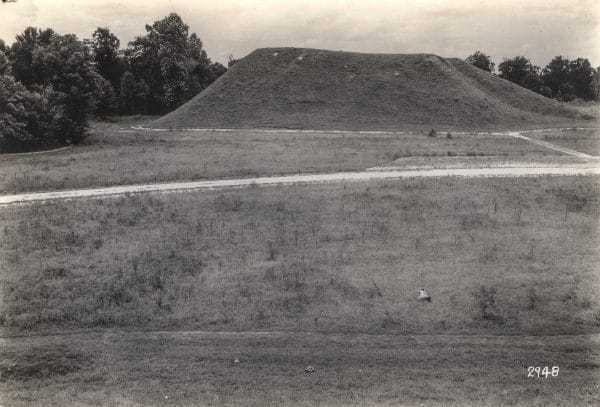 Moundville in the 1930s
In addition to developing an entirely new generation of archeologists trained in the latest excavation methods, Jones’s archaeological accomplishments included the preservation and restoration of the mounds, the adjacent terrain, and even the lakes in the Moundville area, in addition to the finds (primarily painted pottery, beads, implements from daily life, and burial objects) excavated from the Moundville site. These artifacts were of paramount importance to the study of Native American culture of the Mississippian period. Although he was responsible for promoting modern excavation methods, Jones himself focused primarily on these “artifacts” rather than the more holistic type of archeology practiced today, which stresses the significance of every aspect of a site, not just the objects it contains. Jones’s major excavations at Moundville ended in 1941, although Jones and DeJarnette undertook another small excavation in 1951.
Moundville in the 1930s
In addition to developing an entirely new generation of archeologists trained in the latest excavation methods, Jones’s archaeological accomplishments included the preservation and restoration of the mounds, the adjacent terrain, and even the lakes in the Moundville area, in addition to the finds (primarily painted pottery, beads, implements from daily life, and burial objects) excavated from the Moundville site. These artifacts were of paramount importance to the study of Native American culture of the Mississippian period. Although he was responsible for promoting modern excavation methods, Jones himself focused primarily on these “artifacts” rather than the more holistic type of archeology practiced today, which stresses the significance of every aspect of a site, not just the objects it contains. Jones’s major excavations at Moundville ended in 1941, although Jones and DeJarnette undertook another small excavation in 1951.
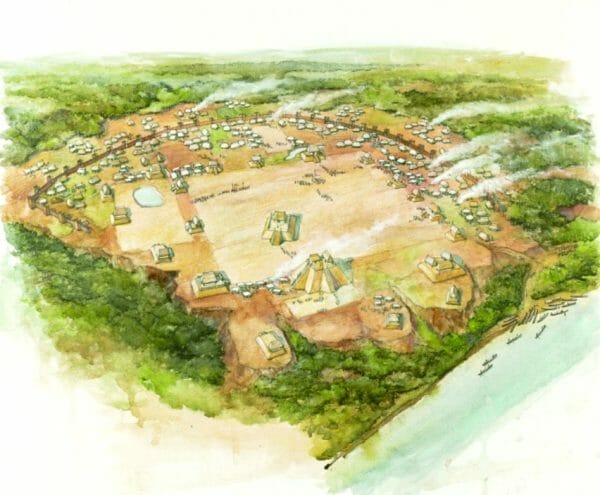 Moundville Reconstruction
Jones was also the driving force behind the creation of what is today the University of Alabama’s Jones Museum at Moundville Archaeological Park, which was named in his honor in 1995. He conceived a museum that would display the culture and life of the Native Americans who lived at Moundville and constructed its more than two dozen earthen mounds. The museum would house artifacts excavated from the site and feature two wings constructed over unexcavated burials, so museumgoers could view them in their undisturbed condition. Construction began in early 1937, primarily using workers from the CCC. The museum opened its doors in May 1939, and has since seen hundreds of thousands of visitors.
Moundville Reconstruction
Jones was also the driving force behind the creation of what is today the University of Alabama’s Jones Museum at Moundville Archaeological Park, which was named in his honor in 1995. He conceived a museum that would display the culture and life of the Native Americans who lived at Moundville and constructed its more than two dozen earthen mounds. The museum would house artifacts excavated from the site and feature two wings constructed over unexcavated burials, so museumgoers could view them in their undisturbed condition. Construction began in early 1937, primarily using workers from the CCC. The museum opened its doors in May 1939, and has since seen hundreds of thousands of visitors.
Jones was an avid proponent of conserving natural resources as well as archeological and historical sites. His interests led him to promote the creation of the State Oil and Gas Board of Alabama, on which he served as supervisor beginning in 1939. This position was made permanent and held by every official State Geologist from that point forward. Jones was also director of what is now the Alabama Department of Conservation and Natural Resources for a brief period in 1939-1940.
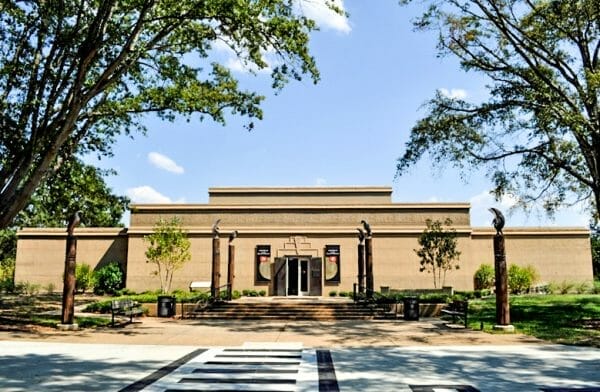 Jones Archaeological Museum
Jones’s passion may have been archaeology, but his scientific curiosity was vast and did not confine itself to a single field. As State Geologist, he concentrated on Alabama’s water, mineral, and fossil fuel resources through the Geological Survey of Alabama. He produced an array of photographs of the historical and geological features he surveyed, and one of Jones’s first acts after succeeding Smith was to compile Smith’s monumental field notebooks on geology and Alabama cultural history into a seven-volume set. Jones authored numerous books, professional papers, and studies on the state’s geological features, such as the caves of Madison and Morgan Counties, as well as various works on mineral deposits and other natural resources. A fellow of the American Association for the Advancement of Science, he was active in a variety of professional organizations, including the Geological Society of America; the American Institute of Mining, Metallurgical, and Petroleum Engineers; the National Speleological Society; and the Alabama Wildlife Federation.
Jones Archaeological Museum
Jones’s passion may have been archaeology, but his scientific curiosity was vast and did not confine itself to a single field. As State Geologist, he concentrated on Alabama’s water, mineral, and fossil fuel resources through the Geological Survey of Alabama. He produced an array of photographs of the historical and geological features he surveyed, and one of Jones’s first acts after succeeding Smith was to compile Smith’s monumental field notebooks on geology and Alabama cultural history into a seven-volume set. Jones authored numerous books, professional papers, and studies on the state’s geological features, such as the caves of Madison and Morgan Counties, as well as various works on mineral deposits and other natural resources. A fellow of the American Association for the Advancement of Science, he was active in a variety of professional organizations, including the Geological Society of America; the American Institute of Mining, Metallurgical, and Petroleum Engineers; the National Speleological Society; and the Alabama Wildlife Federation.
Jones retired as State Geologist and director of the Alabama Museum of Natural History in 1961, but held emeritus status in both positions until his death in 1977. In his retirement, Jones remained active in the field of conservation geology, and the importance of his work in the areas of archaeology, geology, Native American cultural studies, conservation, and preservation is widely recognized today. In addition to the Jones Museum, the Iron and Steel Museum of Alabama, in Jefferson County, houses the Walter B. Jones Center for Industrial Archaeology.
Further Reading
- Anderson, David G., and Kenneth E. Sassaman, eds. The Paleoindian and Early Archaic Southeast. Tuscaloosa: University of Alabama Press, 1996.
- Garrison, Ellen. “Walter B. Jones and Moundville.” Alabama Heritage 61 (Summer 2001): 6-17.
- Knight, Vernon James Jr. Mound Excavations at Moundville: Architecture, Elites, and social Order. Tuscaloosa: University of Alabama Press, 2010.
- Walthall, John A. Prehistoric Indians of the Southeast: Archaeology of Alabama and the Middle South. Tuscaloosa: University of Alabama Press, 1980.

